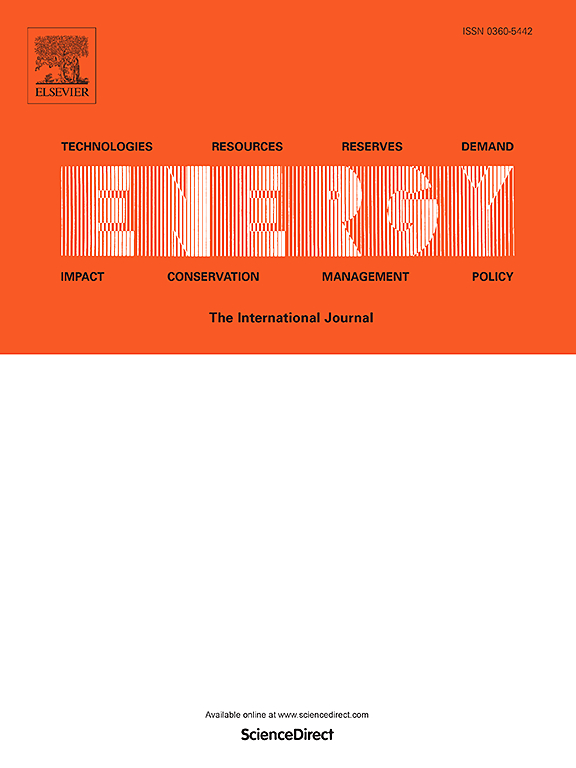城市生活垃圾资源化升级:基于场景的技术经济评价与生命周期评价
IF 9
1区 工程技术
Q1 ENERGY & FUELS
引用次数: 0
摘要
对废物转化能源技术进行全面比较对于指导可持续发展至关重要。我们的研究考察了八种垃圾焚烧方案,包括五种基于气化的方案、一种基于焚烧的方案和两种基于热解的方案,旨在从城市固体废物中生产合成气、电力、氢气、甲醇和汽油。在进行技术经济分析(TEA)和生命周期评估(LCA)之前,我们进行了热集成,以最大限度地减少每种方案的效用需求。由于热集成,在所有情况下加热需求完全抵消,冷却需求显著下降。由于TEA,基于气化的方案的总成本在111.2至164.7百万桶/年之间,基于热解的方案的成本最高,为176.7和182.8百万桶/年。相反,基于焚烧的方案的成本最低,为82.0百万桶/年。气化生产的合成气、氢气和甲醇的最低销售价格(MSP)分别为0.26、1.68和0.35美元/公斤。电力的msp从低到高依次为:焚烧(美分7.81/千瓦时)、气化(美分9.41/千瓦时)、热解(美分14.5/千瓦时)。然而,基于热解的方案的汽油MSP(2.70美元/加仑)低于基于气化的方案(3.05美元/加仑),考虑到2.5-3.1美元/加仑的市场范围,显示出价格竞争力。此外,结合LCA,进行了敏感性分析,以评估经济参数、技术参数、工厂产能和补贴对经济的影响,为可持续发展提供了有价值的见解。本文章由计算机程序翻译,如有差异,请以英文原文为准。
Upcycling municipal solid waste: Scenario-based techno-economic evaluation and life cycle assessment
A comprehensive comparison of energy from waste (EfW) technologies is essential for guiding sustainable development. Our study examined eight EfW scenarios, including five gasification-based, one incineration-based, and two pyrolysis-based configurations, designed to produce syngas, electricity, hydrogen, methanol, and gasoline from municipal solid waste. We performed heat integration to minimize the utility demand for each scenario before conducting a techno-economic analysis (TEA) and life-cycle assessment (LCA). Because of the heat integration, the heating requirements were completely offset in all scenarios, and the cooling requirements significantly dropped. As a result of TEA, the total costs of the gasification-based scenarios ranged between 111.2 and 164.7 MMUSD/year and the pyrolysis-based scenarios exhibited the highest costs with 176.7 and 182.8 MMUSD/year. Conversely, the incineration-based scenario presented the lowest cost at 82.0 MMUSD/year. The minimum selling prices (MSP) of syngas, hydrogen, and methanol produced by gasification were 0.26, 1.68, and 0.35 USD/kg, respectively. The MSPs of electricity from lowest to highest are as follows: incineration (₵7.81/kWh), gasification (₵9.41/kWh), and pyrolysis (₵14.5/kWh). However, the pyrolysis-based scenario had a lower gasoline MSP ($2.70/gal) than the gasification-based scenario ($3.05/gal), demonstrating price competitiveness considering the market range of $2.5–3.1/gal. In addition, in conjunction with LCA, sensitivity analyses were performed to assess the impacts of economic parameters, technical parameters, plant capacity, and subsidies on the economics, offering valuable insights toward sustainability.
求助全文
通过发布文献求助,成功后即可免费获取论文全文。
去求助
来源期刊

Energy
工程技术-能源与燃料
CiteScore
15.30
自引率
14.40%
发文量
0
审稿时长
14.2 weeks
期刊介绍:
Energy is a multidisciplinary, international journal that publishes research and analysis in the field of energy engineering. Our aim is to become a leading peer-reviewed platform and a trusted source of information for energy-related topics.
The journal covers a range of areas including mechanical engineering, thermal sciences, and energy analysis. We are particularly interested in research on energy modelling, prediction, integrated energy systems, planning, and management.
Additionally, we welcome papers on energy conservation, efficiency, biomass and bioenergy, renewable energy, electricity supply and demand, energy storage, buildings, and economic and policy issues. These topics should align with our broader multidisciplinary focus.
 求助内容:
求助内容: 应助结果提醒方式:
应助结果提醒方式:


